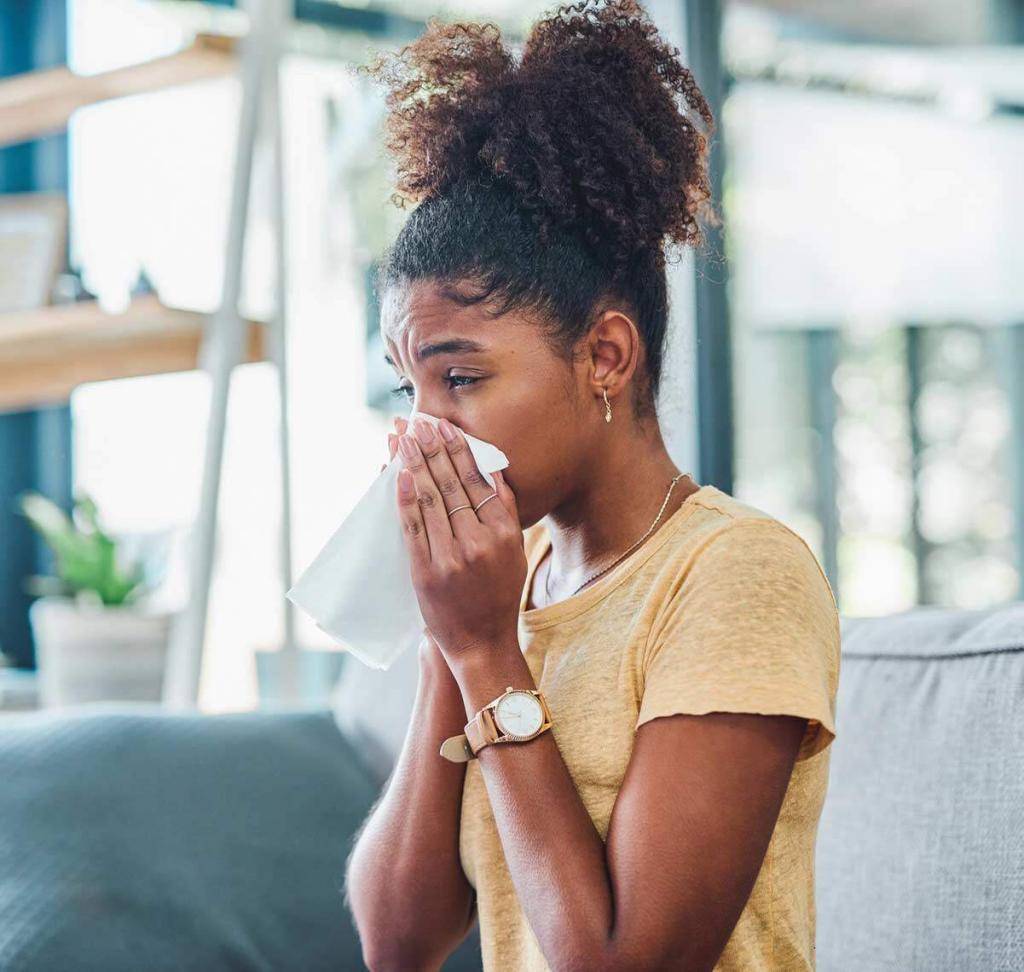For many St. Louis families, seasonal allergies aren’t limited to the outdoors.
Pollen, pet dander, dust mites, and other airborne particles often make their way inside — and once they do, they tend to linger. If you’re sneezing indoors or dealing with itchy eyes and congestion long after you’ve come inside, your home’s indoor air quality might need attention.
While medication can provide relief, creating a cleaner home environment can make a big difference in day-to-day comfort. Below are some of the most effective indoor air quality solutions to consider before scheduling professional help — especially if you or your loved ones are prone to allergies.

1. Upgrade Your HVAC Filters
One of the simplest and most impactful things you can do is evaluate the type of air filter currently installed in your HVAC system. Many standard filters are designed primarily to protect the system itself, not necessarily to improve air quality for the people inside the home.
Consider Higher MERV Ratings
Air filters are rated using the Minimum Efficiency Reporting Value (MERV) system. The higher the MERV rating, the better the filter is at trapping smaller particles. Filters in the MERV 8–13 range are often recommended for residential use, striking a good balance between filtration efficiency and airflow. A higher MERV-rated filter can capture pollen, mold spores, dust mites, and even pet dander for allergy sufferers.
Note: It’s vital to ensure your HVAC system can handle a higher-rated filter, as overly restrictive filters can strain the equipment.
2. Use Portable Air Purifiers in Key Areas
Even with an upgraded HVAC filter, pollutants can still accumulate in high-traffic areas or rooms where pets spend time. Portable air purifiers offer a flexible, room-by-room solution that can help reduce airborne allergens.
Look for HEPA Filters
HEPA (High-Efficiency Particulate Air) filters are often the gold standard when shopping for a unit. These filters can efficiently capture particles as small as 0.3 microns, including many of the most common indoor allergens. For bedrooms or nurseries, this type of purifier can provide a noticeable improvement in comfort, especially during peak allergy seasons in St. Louis.
3. Manage Humidity Levels
Excess moisture in the home can worsen allergies by promoting mold growth and dust mite populations. Conversely, air that’s too dry can irritate nasal passages and exacerbate symptoms.
Invest in a Whole-Home or Standalone Humidifier/Dehumidifier
A properly balanced indoor humidity level (typically between 30% and 50%) can help create a more comfortable, allergy-friendly environment. Depending on your specific situation, you might benefit from a dehumidifier in basements or bathrooms or a humidifier during the dry winter.
Many HVAC systems can be paired with humidity control equipment to manage this automatically — something to keep in mind if you plan future upgrades.
4. Keep Up with Regular HVAC Maintenance
A clean HVAC system runs more efficiently and helps maintain cleaner air throughout your home. Dust and debris can build up inside air ducts and on system components over time, especially if filters aren’t changed regularly.
Seasonal Tune-ups Make a Difference
While not always on your mind, scheduling routine HVAC maintenance before peak heating or cooling seasons can help ensure your system runs clean and efficiently. Technicians can check for issues contributing to poor indoor air quality, such as mold growth in condensate lines or dirty blower motors.
5. Limit Sources of Allergens Indoors
Finally, it’s worth remembering that prevention plays a key role in air quality. Many allergens are introduced into the home from the outside or through daily habits.
A Few Practical Tips:
- Remove shoes at the door to avoid tracking in pollen and dust.
- Wash bedding weekly in hot water to kill dust mites.
- Vacuum with a HEPA filter regularly, especially if you have pets.
- Consider allergen-barrier covers for pillows and mattresses.
- Keep windows closed on high-pollen days, especially in spring and early fall.
A Healthier Home Starts with Cleaner Air
Improving your home’s air quality doesn’t always require a major renovation or new equipment. Small changes—like upgrading your HVAC filter, using a portable purifier, and staying on top of maintenance—can often have a meaningful impact.
If you’ve already made some of these changes and are still experiencing symptoms, it might be time to explore professional options. Customized solutions can integrate with your current HVAC system and further reduce airborne allergens throughout your home.
Ready to take the next step? Our Thomas Hoffmann Air Conditioning & Heating team is here to help when you’re ready. Whether you’re exploring indoor air quality upgrades or want expert advice, we’re proud to serve families across the St. Louis area with honest, reliable service.
Ready to Schedule Your HVAC Maintenance?
Our expert technicians are ready to help keep your system running smoothly all year long.
